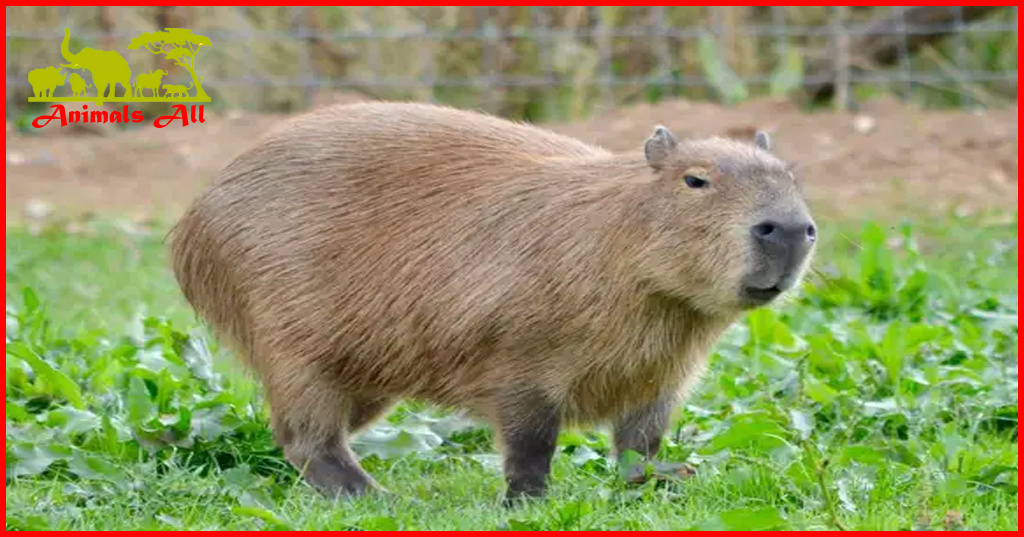
Capybaras, are they big rats without tails
Capybaras, these fat and cute , are amazing in size, up to 130 cm long and weighing up to 50 kg. Compared to some cats, their size is even more spectacular. Capybaras have a rather wide head, a flat nose, and small round eyes. They look a bit like cartoon characters, very cute. But don’t be fooled by their cute appearance, they are masters of survival in nature.

The capybara’s skin is quite thick, gray-brown or yellow-brown, and covered with wrinkles. These wrinkles not only help to maintain body temperature, but also prevent water from flowing into the nose, which is really a natural protective device. The capybara’s teeth are also quite strong and can easily chew wood and hard plants, which also reflects the fact that they mainly eat plants as their food source.

The capybara’s hair is relatively rough and sparse, and the color of the back varies, including yellow-brown, reddish-brown, dark brown, and even dark gray. The abdomen is yellow-brown, and the face, outer edges of the limbs and buttocks are sometimes black. But one of the most striking features is that the capybara’s tail is extremely short and almost invisible, which is why they are nicknamed “big rats without tails.”
Nature’s friendly
Capybaras are nature’s friendly ambassadors. They seem to be able to make friends with any animal in the world, and in very special ways. Someone once saw a capybara standing on the back of an alligator, letting the alligator carry it like a loyal mount. This is really incredible. There are also capybaras who just lie next to the alligator to enjoy the sun bath together, or leisurely walk through a large group of alligators. This has earned the capybara a famous nickname, known as “nature’s soft stool.” What does this mean? Simply put, any animal can sit on them, just like sitting on a soft stool.
Capybaras live in savannas or forests, close to water. They are truly semi-aquatic animals, with some unique lifestyles that are amazing to watch. First, capybaras spend most of their time on land enjoying their natural feasts, eating grass, and have another surprising habit. Just like rabbits, capybaras will re-taste their feces and perform a secondary digestion, which seems to be a clever strategy for getting more nutrients.

But the delicacies near the water also come with dangers. Big cats, such as cougars and jaguars, are always lurking nearby, and they are the natural enemies of capybaras. So, at the slightest sign of trouble, capybaras will quickly jump into the water and start their journey to escape. Fortunately, capybaras are equipped with webbed feet, so they can swim quite fast, but there are also dangers lurking in the water, such as crocodiles, so the life of a capybara is full of challenges.
Unique survival
They have a unique way of survival, and having many offspring is the secret to maintaining the stability of their population. At about one and a half years old, capybaras reach sexual maturity. At which time female capybaras will release a special scent to attract male capybaras to pursue them. Once the fire of love is ignite, they will embark on a romantic journey in the water. Because capybara mating must be complete in the water.

The gestation period for capybaras is about 130 to 150 days. Each litter can have anywhere from one to eight pups, but is usually around four. That’s no joke, the capybara parents are responsible for taking care of the whole family. The young capybaras are born on land, but become independent very quickly. They are born with teeth, and after about a week they start to pursue their own food. They still needing their mother’s milk, but also starting to eat grass. This independent quality ensures the survival of the capybara population.
In short, they are a unique landscape in nature. Their wonderful appearance and unique lifestyle make people marvel at their existence. They are like an interesting little secret of nature, waiting to be discover.

